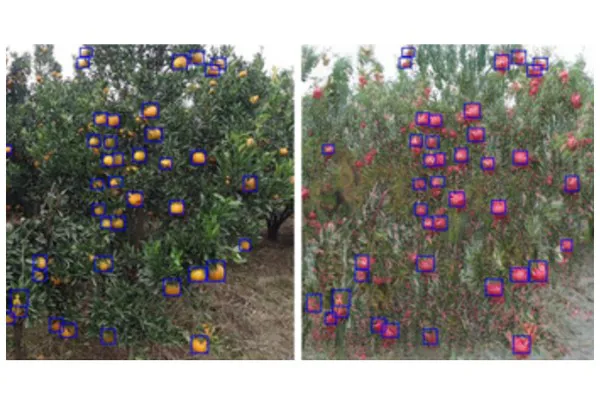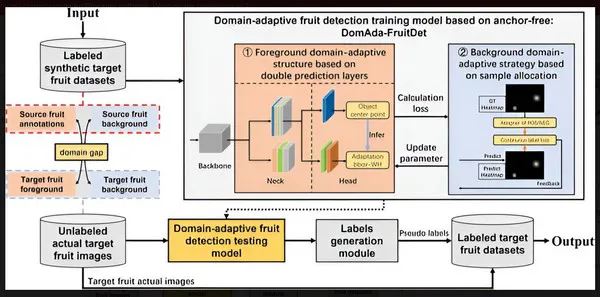In the fruit industry, the integration of deep learning for tasks such as yield prediction and automated picking has been pivotal. The process of training data labeling, however, remains a challenge due to its labor-intensive nature. Plant Phenomics recently published a study titled "DomAda-FruitDet: Domain-Adaptive Anchor-Free Fruit Detection Model for Auto Labeling," aiming to address the "domain gap" that exists between synthetic training data and real-world application data. This gap often manifests in discrepancies in foreground object scale and background consistency. 
The research introduces DomAda-FruitDet, a model that incorporates a double prediction layer-based foreground domain-adaptive structure and a background domain-adaptive strategy through sample allocation. This approach is designed to mitigate domain gaps, thereby enhancing the model's generalization capability. DomAda-FruitDet has demonstrated impressive average precision scores across various fruit datasets, including apple (90.9%), tomato (90.8%), pitaya (88.3%), and mango (94.0%).

Click here to enlarge this image.
The model's effectiveness was further confirmed through experiments with datasets from EasyDAMv1 and EasyDAMv2, which include both synthetic and actual fruit images. DomAda-FruitDet's ability to adaptively generate high-quality labels in the face of significant domain discrepancies has been validated, indicating a significant reduction in the labor and time required for data labeling. This advancement holds promise for the deployment of more accurate and efficient smart orchard technologies, potentially revolutionizing agricultural practices with enhanced deep learning model applicability.
Source: phys.org
